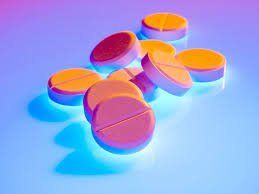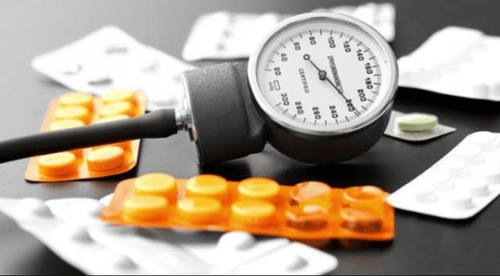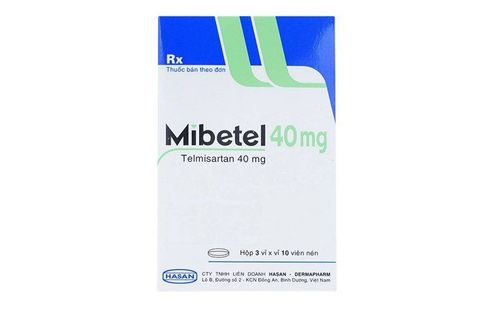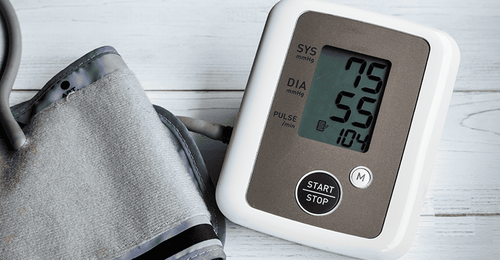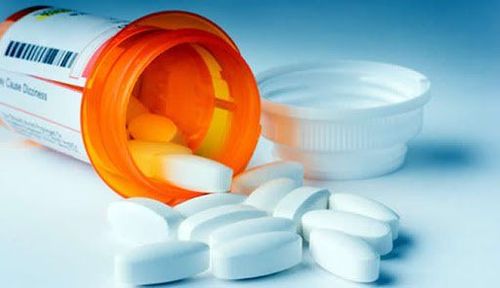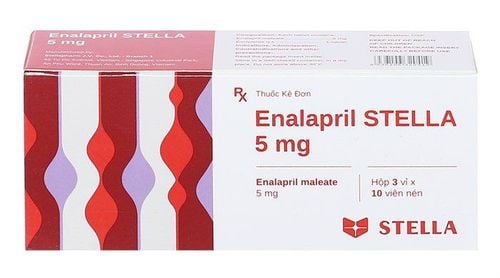This is an automatically translated article.
The article was written by Doctor Dang Anh Son - Emergency Department, Vinmec Times City International General Hospital.
Normal blood pressure is about 120/80 mmHg (120: systolic pressure, 80: diastolic) A blood pressure reading less than 90 mmHg (systolic) or 60 mmHg (diastolic) is usually considered a blood pressure short. Causes of low blood pressure can range from dehydration to serious medical disorders. It is important to find the cause of your low blood pressure so that it can be treated.
I. Symptoms
For some people, low blood pressure signals an underlying problem, especially when it drops suddenly or is accompanied by signs and symptoms such as:
Dizziness or lightheadedness Fainting Blurry or fading vision Nausea Fatigue Lack of concentration Shock: Excessive lowering of blood pressure can lead to this life-threatening condition. Signs and symptoms include:
Confusion, especially in the elderly Cold, rough, pale skin Rapid, shallow breathing Weak and rapid pulse
II. Reason
Causes of low blood pressure are diverse including:
Pregnancy. Because the circulatory system expands rapidly during pregnancy, blood pressure can drop. This is normal and blood pressure usually returns to pre-pregnancy levels after you give birth. Cardiovascular problems. Some heart conditions that can lead to low blood pressure include extremely low heart rate (bradycardia), heart valve problems, heart attack, and heart failure. Endocrine problems. Parathyroid disease, adrenal insufficiency (Addison's disease), low blood sugar (hypoglycemia), and in some cases, diabetes can cause low blood pressure. Loss of water. When the body loses more water than it needs, it can cause weakness, dizziness, and fatigue. Fever, vomiting, severe diarrhea, overuse of diuretics, and strenuous exercise can lead to dehydration. Bleed. Loss of blood, such as major trauma or internal bleeding, reduces the amount of blood in the body, leading to a serious drop in blood pressure. Severe infection (sepsis). When an infection in the body enters the bloodstream, it can lead to a life-threatening drop in blood pressure known as septic shock. Severe allergic reaction (anaphylaxis). Common triggers of this serious and potentially life-threatening reaction include food, certain medications, insect venom, and rubber. Anaphylaxis can cause difficulty breathing, hives, itching, swelling of the throat, and a dangerous drop in blood pressure. Lack of nutrients in your diet. A lack of vitamin B-12, folate, and iron can prevent your body from producing enough red blood cells (anemia), causing low blood pressure. Medicines that can cause low blood pressure: Medicines that lower blood pressure, Medicines for Parkinson's disease, such as pramipexole (Mirapex) or those containing levodopa, Certain antidepressants (tricyclic antidepressants), include doxepin (Silenor) and imipramine (Tofranil).
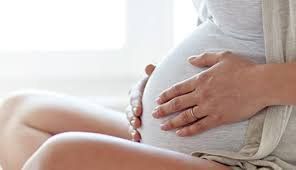
Mang thai là một trong các nguyên nhân gây ra huyết áp thấp rất
III. Classify
Depends on the cause and other factors, including:
Low blood pressure when standing up (orthostatic hypotension). This is a sudden drop in blood pressure when you get up from a sitting position or after lying down. Low blood pressure after eating (postprandial hypotension). This drop in blood pressure occurs one to two hours after eating and affects mainly older adults. Low blood pressure caused by faulty brain signals (neurally mediated hypotension). This disorder, which causes a drop in blood pressure after standing for long periods of time, mainly affects adults and children. Low blood pressure due to damage to the nervous system (multiple system atrophy with orthostatic hypotension). Also known as Shy-Drager syndrome, this rare disorder has many of the same symptoms as Parkinson's disease.
IV. Risk factors and complications
Risk
Age: A drop in blood pressure when standing or after eating mainly occurs in adults over 65 years of age. Neurally mediated hypotension mainly affects children and young adults. Medications: People who take certain medications, such as high blood pressure medications such as alpha blockers, have an increased risk of low blood pressure. Certain diseases: Parkinson's disease, diabetes, and certain heart conditions put you at higher risk for low blood pressure. Complications
Even moderate forms of low blood pressure can cause dizziness, weakness, fainting, and a risk of injury from a fall.
And severely low blood pressure can deprive your body of enough oxygen to perform its functions, leading to damage to your heart and brain.
V. Diagnosis
The goal in low blood pressure testing is to find the cause. In addition to taking your medical history, doing a physical exam, and measuring your blood pressure, your doctor may recommend the following:
Blood tests . They can provide information about your overall health as well as whether you have blood sugar disorders, anemia, etc., all of which can cause lower-than-normal blood pressure. Electrocardiogram (ECG). help detect abnormalities in your heart's rhythm, structural problems in your heart, and problems with the supply of blood and oxygen to your heart muscle. Check the tilt table. If you have low blood pressure when standing or because of faulty brain signals (neurally mediated hypotension), a tilt table test can evaluate how your body responds to changes in position.
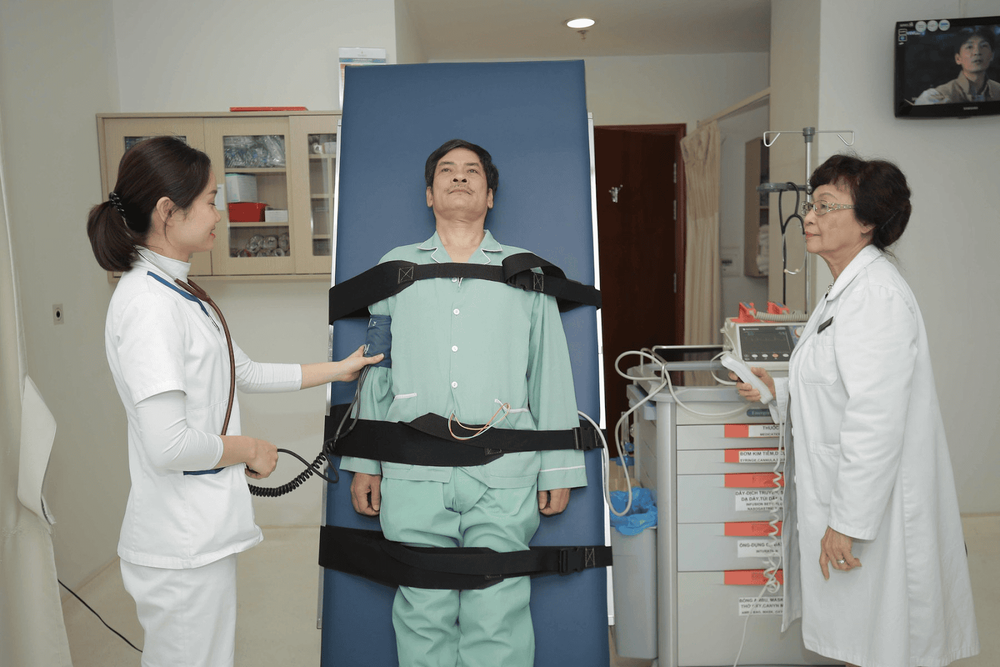
Kiểm tra bàn nghiêng giúp chẩn đoán huyết áp thấp ở người bệnh
BECAUSE. Treatment
Low blood pressure that doesn't cause signs or symptoms or causes only mild symptoms rarely requires treatment.
If you have symptoms, treatment depends on the cause. For example, when medication is causing low blood pressure, treatment often includes changing or stopping the medication or reducing the dose.
If the cause of low blood pressure is unknown or there is no treatment, the goal is to raise blood pressure and reduce signs and symptoms. Depending on your age, health and type of low blood pressure, you can do this in a few ways:
Use more salt. Experts generally recommend limiting salt in your diet because sodium can raise blood pressure, sometimes suddenly. For people with low blood pressure, that can be a good thing. Drink more water. Fluids increase blood volume and help prevent dehydration, both of which are important in the treatment of hypotension. Wear compression stockings. Elastic stockings commonly used to reduce pain and swelling caused by varicose veins can help reduce the amount of blood pooling in your legs. Medicine. Certain medications can be used to treat low blood pressure that occurs when you stand up (orthostatic hypotension). For example, the drug fludrocortisone, which helps increase blood volume, is often used to treat this form of low blood pressure. Doctors often use the drug midodrine (Orvaten) to raise orthostatic blood pressure levels in people with chronic orthostatic hypotension. It works by restricting the ability of blood vessels to dilate, which increases blood pressure.
Lifestyle and home remedies
Depending on the reason for low blood pressure, you can reduce or prevent symptoms.
Drink more water, less alcohol. Alcohol is dehydrating and can lower blood pressure, even if you drink in moderation. On the other hand, water fights dehydration and increases blood volume. Pay attention to locations on your body. Gently transition from a prone position or squat to a standing position. Do not sit cross-legged. Eat small meals. To help keep blood pressure from plummeting after meals, eat small portions several times a day and limit carbohydrate-rich foods like potatoes, rice, pasta, and bread. Exercise regularly. Try to exercise for 30 to 60 minutes a day to get your heart rate up and resistance training two or three days a week. Avoid exercising in hot and humid conditions. Any questions that need to be answered by a specialist doctor as well as if you want to be examined and treated at Vinmec International General Hospital, you can contact Vinmec Health System nationwide or register online. online on the Website for the best service.
Please dial HOTLINE for more information or register for an appointment HERE. Download MyVinmec app to make appointments faster and to manage your bookings easily.




